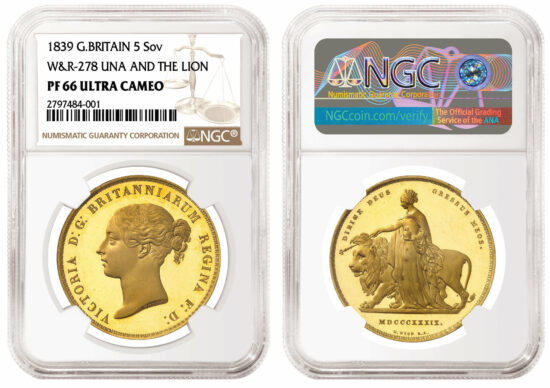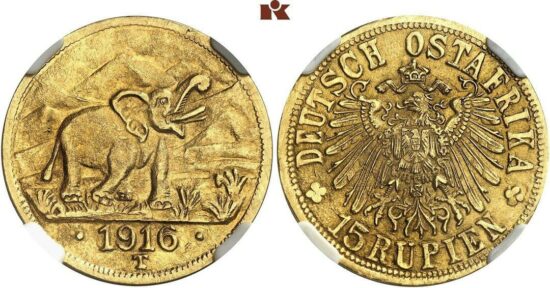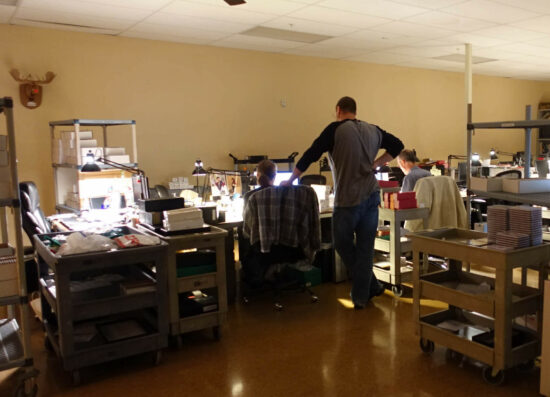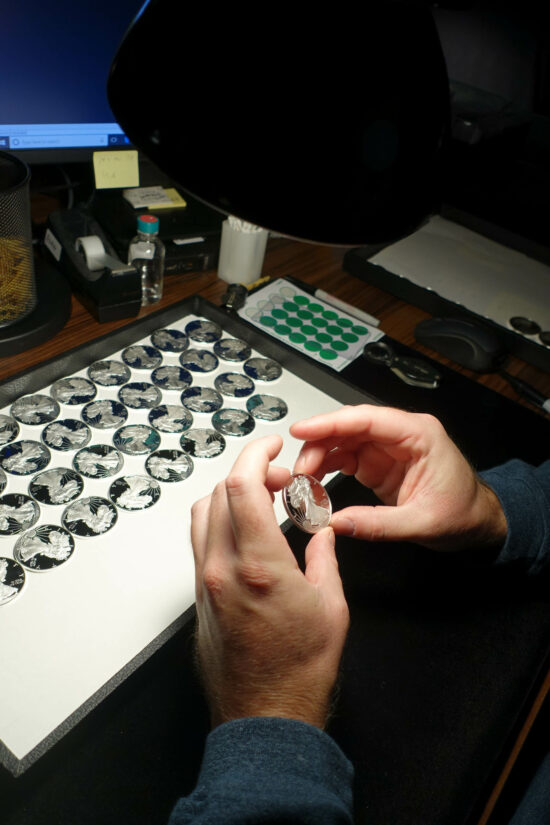The traditional European system of coin grades is hardy used anymore in the USA. Since the 1970s, new developments have established themselves there, which had a major impact on the international coin trade. We explain what these developments are about and why they are so successful.
The USA Revolutionizes the System
In the 1970s, collecting coins became a mass phenomenon. The largest group of collectors wasn’t made up of professors and wealthy citizens anymore. Collecting coins became a wide-spread hobby – which enabled you to make a lot of money, but there was a possibility of losing it too. Investors also began to take an interest in coins. Given these new circumstances, the USA questioned the standards of the hitherto rather small world of the numismatic trade.
This mainly concerned coin grades. The commonly used coin grades of the European coin trade were considered too unspecific by some coin dealers in the USA. They needed something measurable. In this context, the Sheldon Scale was established in the 1970s. It is a modified version of a scale drawn up in the 1940s by William H. Sheldon, which was originally intended to be used exclusively for machine-made US coins.
The Sheldon Scale replaces European coin grades with a specific number between 1 and 70, with 70 referring to the best condition there is. The numbers correspond to the following grades of the European system:
- 20-39 – Very fine
- 40-49 – Extremely fine
- 50-58 – About uncirculated
- 60-70 – Mint state
Third-Party Grading
In the 1980s, another development came up in this context. Previously, dealers had been the ones to determine the grade of a coin. Long-time collectors could tell if a coin grade was not appropriate, newbies and investors, however, were often unable to do so. Thus, they ran the risk of being deceived. So, how to assure to the collector that a coin grade has been assessed correctly? By having a third-party grade it instead of the seller!
The first professional grading agencies were founded in 1986 and 1987 and independently assessed the condition of the coins according to the Sheldon Scale. This is called third-party grading. Today there are many companies of this kind, the market leaders are NGC (Numismatic Guaranty Company) and PCGS (Professional Coin Grading Service).
What Is Meant by Abbreviations Like “MS64 NGC” and “VF25 PCGS”?
Thanks to this information we can now tell what abbreviations like “VF25 PCGS” in auction catalogues mean. It indicates that the coin was given the grade 25 out of 70 by the grading company PCGS. This corresponds to the coin grade VF – very fine. “MS64 NGC” thus means that the coin was given the grade 64 out of 70 by NGC, which corresponds to mint state. If you place a bid for a coin with such an indication, you should know one more thing: it will be delivered in a plastic holder.

A coin in an NGC holder. The identification and the grade of the coin are printed on the hol-der, in addition there is the company logo and an individual certification number, which can be verified on the NGC website for additional security. Photo: NGC.
The Guarantee of the Grade: Coin Holders
Once the condition of a coin has been professionally determined, we get to the next step of coin grading. The coin is encapsuled hermetically in a transparent plastic container, on which the result of the grading process is printed. These containers are called holders, or colloquially slabs. There are sensible reasons for this step: it is meant to ensure that the coin grade as certified by the company will not be altered by future effects. Moreover, it is impossible to change the coin, and you can clearly identify which specimen the certification belongs to. For if you open the holder, the certification is no longer valid.
The Pros and Cons
Thanks to this clever process, “unsecure” coins, whose authenticity and condition always had to be checked first, were turned into pieces with a fixed grade and a quantifiable quality that cannot be altered. This laid the foundation for investors placing greater trust in coins as investment objects. Therefore, investors are more willing to pay large sums of money for coins – after all there is a reason why top-graded pieces currently set one record after the other. The grading process has become so fundamental to the performance of coins over the last few years, that – especially in America and Asia – third-party grading is now the standard for high-priced coins. So far, a total of more than 80 million coins have been graded and encapsuled in holders.
Many dealers and collectors in Europe, however, have some problems with this development. They argue that the weight and the edge of a coin can no longer be examined if a coin was placed in a holder, which is why they are no longer able to appropriately verify by themselves whether the coin is genuine. Some are also bothered by the fact that they can no longer take coins in their own hands and maintain the “plastic coffin” interferes with the aesthetics.
You can obviously take a coin out of the holder once you bought it. But you should be aware that this invalidates the certification that usually makes the coin increase in value and, what’s more, there are also arguments in favour of holders concerning the preservation of the specimen. In an airtight holder, the coin is largely protected from mechanical and weather-related damage and alterations. It is also easier to handle without worrying about dropping the coin due to a clumsy gesture and causing serious damage to the edge.

In auction catalogues, coins are usually not depicted with their holders. Due to the four white brackets, you can quickly tell that this coin is in a holder. German East Africa, 15 rupees 1916, Tabora. From Künker auction 350 (2021), lot 2158.
How Can I Have My Coin Graded? How Much Does It Cost?
If you want to have your coin graded and slabbed, you can submit it to a grading company. This is usually done by mail. You can also submit coins for grading on-site at the offices of grading companies or at special grading events at coin shows.
The price depends on the value and the type of the coin. Grading a coin worth less than 3,000 dollars costs approximately between 20 and 50 dollars depending on the company. You can find more detailed information on the websites of these companies.
In this video, NGC walks you through the stages of NGC’s grading process.



